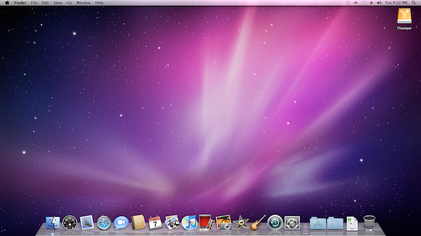Top 5 mac hard drive recovery tools for restoring data on Mac OS X The hard drive is a computer’s data store. From the operating system to the music and pictures, the hard drive contains all the data on a system. Therefore, to have a hard drive go haywire means the possibility of losing tons of valuable data.
These steps apply only to Mac computers with an Intel processor. The steps to erase a Mac with Apple silicon are different.
- Click the Erase button in the toolbar, then enter the requested details: Name: Macintosh HD; Format: APFS or Mac OS Extended (Journaled), as recommended by Disk Utility; Click Erase Volume Group. If you don't see this button, click Erase instead. If asked, enter your Apple ID. Forgot your Apple ID?
- 6) In the erase tab you will see the Format section. Next to this option is the dropdown from where you can choose how you wish to format the drive. For instance, if you wish to use the drive only for one of the Mac OS versions, select Mac OS Extended. If you wish to install the Windows OS on the hard drive, then choose MS-DOS (FAT).
Before erasing your Mac
- Make a backup of any files that you want to keep. Erasing your Mac permanently deletes its files.
- If you want to restore your Mac to factory settings, such as to prepare it for a new owner, first learn what to do before you sell, give away, or trade in your Mac. Then erase your Mac as the final step.
Use Disk Utility to erase your Mac
- Start up from macOS Recovery: Turn on your Mac, then immediately press and hold these two keys until you see an Apple logo or other image: Command (⌘) and R.
- If asked, select a user you know the password for, then enter their administrator password.
- From the utilities window, select Disk Utility and click Continue.
- Select Macintosh HD in the sidebar of Disk Utility. Don't see Macintosh HD?
- Click the Erase button in the toolbar, then enter the requested details:
- Name: Macintosh HD
- Format: APFS or Mac OS Extended (Journaled), as recommended by Disk Utility
- Click Erase Volume Group. If you don't see this button, click Erase instead.
- If asked, enter your Apple ID. Forgot your Apple ID?
- After the erase is done, select any other internal volumes in the sidebar, then click the delete volume (–) button in the toolbar to delete that volume.
Disregard any internal volume named Macintosh HD or Macintosh HD - Data, as well as any volumes in the External and Disk Images sections of the sidebar. - Quit Disk Utility to return to the utilities window.
- If you want to start up again from the disk you erased, select Reinstall macOS in the utilities window, then click Continue and follow the onscreen instructions to reinstall macOS.
If you don’t see Macintosh HD in Disk Utility

Your built-in startup disk should be the first item listed in the Disk Utility sidebar. It's named Macintosh HD, unless you changed its name. If you don't see it there, choose Apple menu > Shut Down, then unplug all nonessential devices from your Mac and try again.
If your disk still doesn't appear in Disk Utility, or Disk Utility reports that the erase process failed, your Mac might need service. If you need help, please contact Apple Support.
Learn more

Erase Hard Drive Mac Os X 10.5.88 Download
For more information about using Disk Utility, see the Disk Utility User Guide.
Most users use Disk Utility to erase a disk or hard drive. But some Mac users might need to erase them from the command line on Mac OS. To do that, the only thing you need is a bit of precise syntax to make sure that you are erasing the proper disk.
Here I'll show you how you can erase and format a disk using the command line.
How To Erase Hard Drive Mac Os X 10.6.8
Working with Terminal
Start off by running the following command in the command line: Diskutil list
This is going to list all the mounted drives on your Mac.
Once you have found the proper drive to erase, just copy its identifier so you can use it for the next command. Then pick a name and a system format type. This is the syntax we need: Diskutil eraseDisk FILESYSTEM DISKNAME DISKIDENTIFIER
Let’s say the disk I want to erase has “/dev/disk5s2” as its identifier and I’m going to use Mac OS Extended Journaled (JHFS+) as the system format type and name it “Empty”. The syntax is going to look like this: Diskutil eraseDisk JHFS+ Empty /dev/disk5s2
It’s important to keep in mind that if you run the eraseDisk command, the target disk is going to lose all its data, so make sure you are erasing the proper disk.
-Step-1-Version-2.jpg/v4-460px-Reinstall-Mac-OS-X-(Leopard-and-Earlier)-Step-1-Version-2.jpg.webp)
Erase Hard Drive Mac Os X 10.5.8e For Mac Os X 10 5 8
If you need different system format types, here are a few references you could use instead of JHFS+:
Erase Hard Drive Mac Os X 10.5.88
- Mac OS Extended: HFS+
- MS-DOS fat32: FAT32
- ExFAT: ExFAT